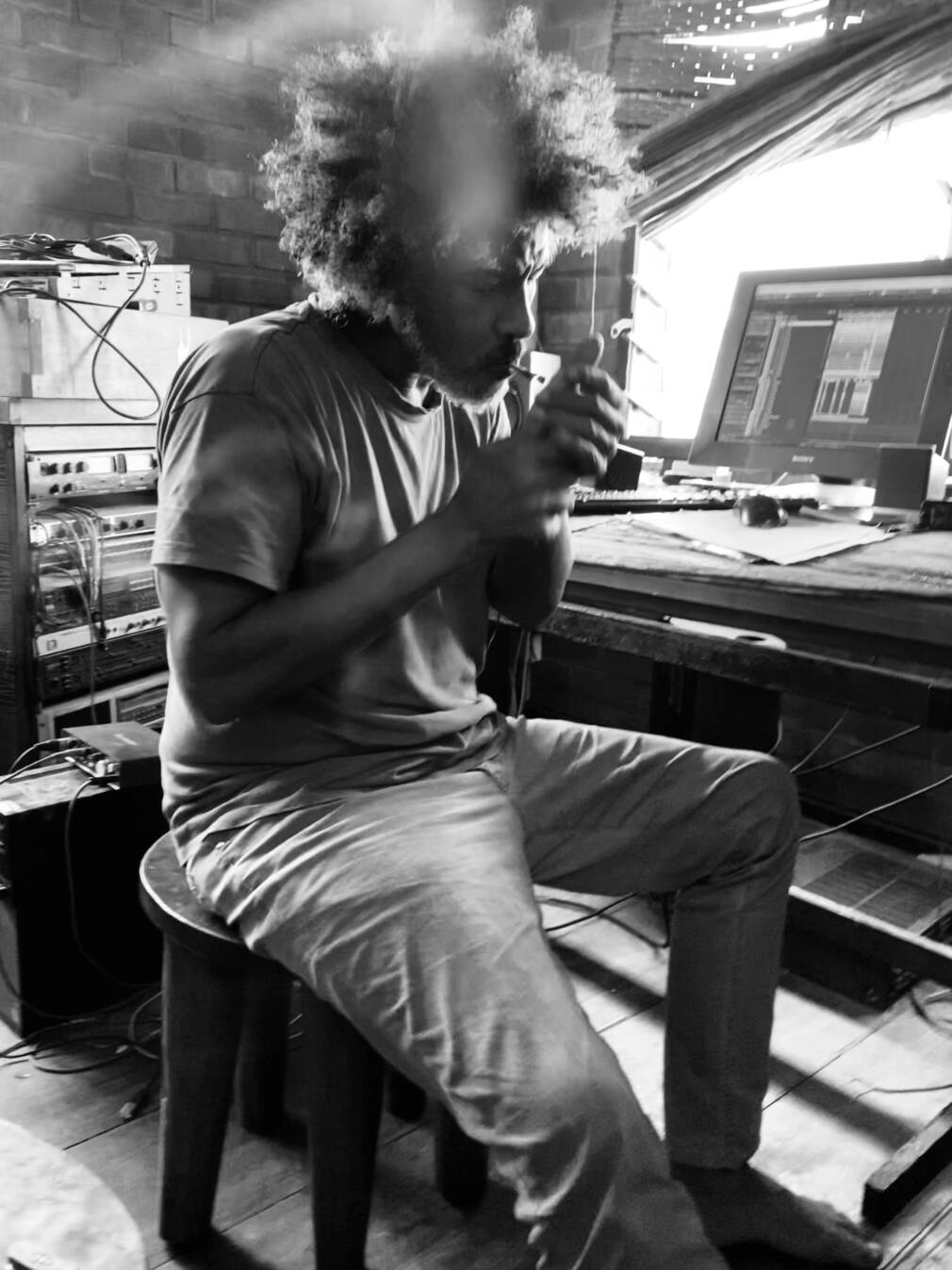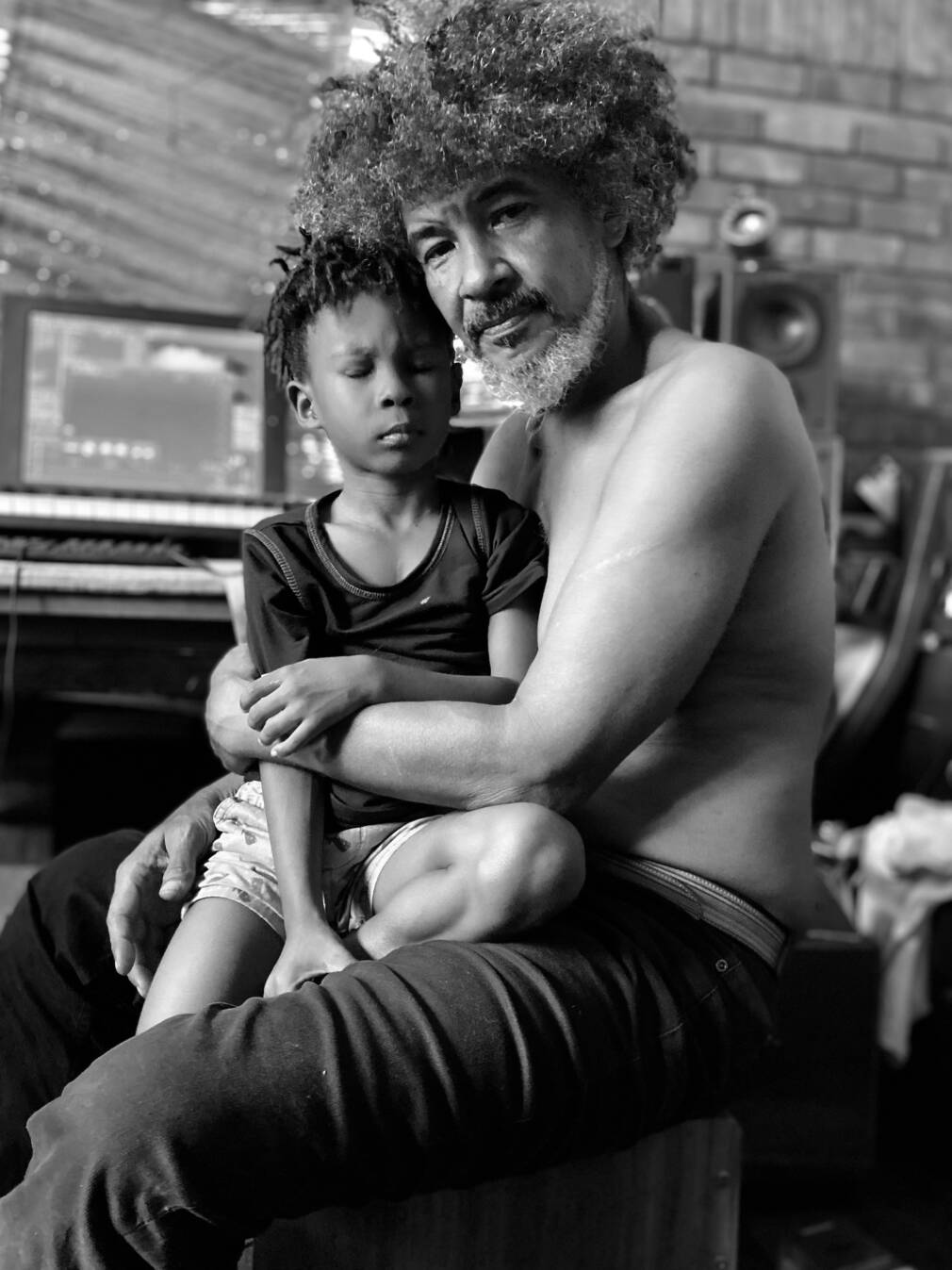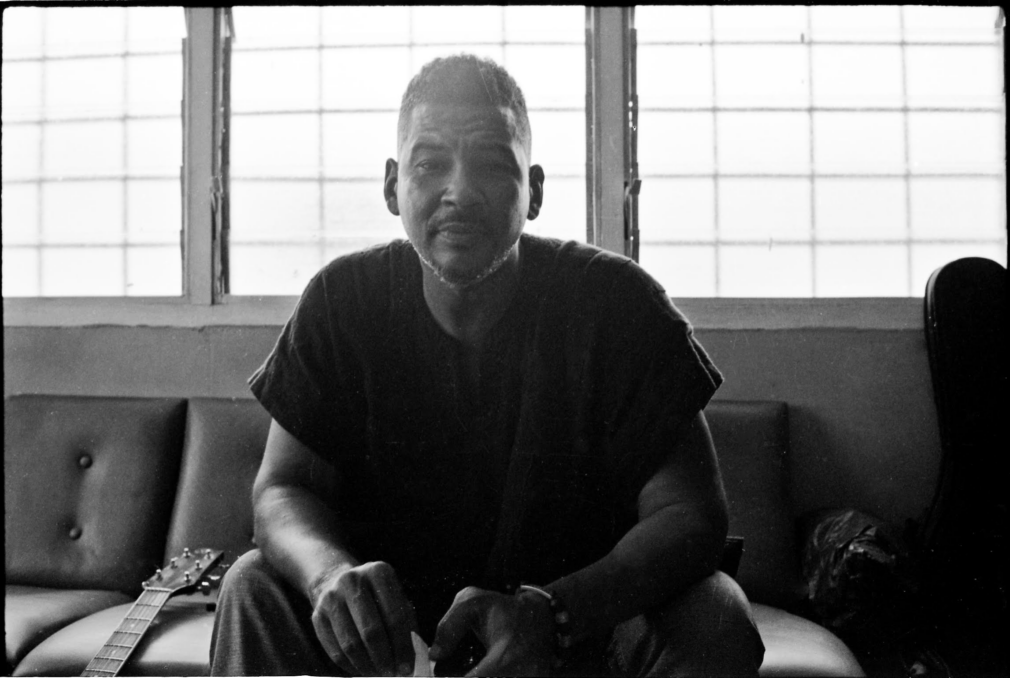Panji-Marc Anoff is a Ghanaian producer, storyteller, musician and creative director among many other things. He grew up in the era of funky highlife, which included Osibisa, Hugh Masekela, Hedzolleh, and projects from Faisal Helwani’s Bibini outlet which explored traditional instruments and idioms. Essiebons was releasing albums by CK Mann, Gyedu-Blay Ambolley with Ebo Taylor as the in-house arranger, which created a progressive Ghanaian sound for the time. It was modern compared to the Big Band highlife which had come before the 70’s like ET Mensah’s Tempos or the Ramblers, but still carried some of the interesting and heavily orchestrated rhythm and horn sections. It’s within this evolution that Panji grew an ear for new sounds, and a taste for modern highlife. Later, Panji would become a key proponent of the Hiplife revolution beginning in the early 90’s and, also dubbed as one of the leaders of the new school of palm wine music.
Panji always showed an early interest in production, having recorded onto cassette and 1/4” tape for friends and family from the age of 9, and gradually growing into recording professional artists as his skills developed. After 8 years of living and working in the UK, Panji returned to Ghana in 1993 and started recording with Talking Drums (the first hiplife duo) and BB Menson for the Back Home Again film soundtrack. In 1991, he started producing hip hop beats based on samples from the African records he had grown up listening to, feeling that to produce hip hop as an African producer, it made sense to sample the African records that had inspired him, considering the wealth of un-sampled gems that could provide him a huge artistic advantage. Inspired by other artists like Da Multi Crew and K.K. Kabobo who were also doing rap influenced music, and artists like Ambulley that had been rapping since the 70’s, Talking Drums explored the space further by using old highlife samples. Panji recorded numerous demos and tracks for the other artists exploring the space, and by the 2000s, he had worked with almost every major artist at the time.
“Every generation has taken highlife and used it to influence the contemporary elements of their time, way before my time”… so by the 80’s, the funky highlife switched to the Burger Highlife, influenced by the pop sound of Europe and America. It was still funky, but it was more disco, and mostly computer programmed, he explained of his teenage influences. “From the age of 3 I lived in Ghana but from the age of 7, I spent the summer with my grandparents in Germany and I used to spend a lot of time in record shops in Germany… I could wake in the morning, jump on a bicycle and off to the record shop and sit there for hours just listening to music on these amazing quality headphones.”

“Coming from the other side of the water, I was also listening to American funk and American soul, also to reggae…By 1980, “Rappers Delight” had entered the Ghanaian scene through the youth.” At the time those who were traveling between America and Ghana were bringing more music videos and spinners like Prime cut, Willie Chi and Sky Hawks played some hip-hop but mostly house music (everybody dance now, ride on time) or “Asokpor”.
“Burger Highlife dominated the Ghanaian scene all through the 80’s and into the 90’s. Artists during this time included McGod, Charles Amoah, The Lumba Brothers, but by the mid 90’s, the hiplife era had begun”…Panji explains
“This was the early 90’s. Britain had already gone through a similar revolution. A lot of the early British hip-hop was more wannabee American hip-hop, but they found their own identity and gradually evolved to make British inspired hip-hop with a British accent. This made me realize to make my hip-hop, I needed local Ghanaian elements.” Talking Drums had the idea not to emulate America but to tap into their Ghanaian identity through their clothes, lyrics and their music in general. It was a perfect match.
“Very quickly, Talking Drums became very influential because Abraham Ohene-Gyan shot a video for ‘Aden’ and it was shown on SmashTV…” This was the first hiplife video and it really opened the eyes of Ghanaians to the possibilities. The video was the first time Ghanaians saw themselves in a Hip-hop video, as the video had a very afro-centric theme. Both rappers had indigenous Batakari smocks on, there were actual talking drums in the video, and the song was driven by a killer C.K man sample. Djs would start playing hiplife in clubs and suddenly the energy levels would change. Hiplife was starting to become a mainstay.
“It takes a few people who have confidence to decide not to imitate but to do it their own way and Reggie Rockstone had the swagger and confidence hiplife in Ghana needed at the time.” Reggie came to Ghana for Panafest 94 and that event took hiplife to the masses. Reggie was older than the other artists, had more confidence and spoke both Twi and English with the American accent of the time. Talking drums left Ghana in ‘95 and Reggie Rockstone stayed and took hiplife to another level. By the mid 90s into the early 2000s a series of new Ghanaian artists began recording and distributing music. Nananom, Akyeame, Chicago, Joe Frazier, KK Fosu, Exdoe, Barima Sydney, Batman Samini and a few others came onto the scene during this time. As hiplife adopted increasingly American rhythms and samples, Panji went in a different direction with hardcore Asokpor inspired dance music and most famous of which perhaps was “Toto mechanic” which didn’t receive radio play but was a hit in the streets.
Another milestone of hiplife music is Obrafour. He came along in 2000 with “The last two”, made of Hammar and Yaw Anoff, a music production duo who helped him bring his sound to life. Obrafours slow rap style mixed with proverbs and thought provoking lyrics allowed him to penetrate the Ghanaian market like no one had before him. Their music was more original and Ghanaians were able to relate to the content. Kwaadees rise to dominance also began from 2001 where he rapped his verse and sang his own choruses unlike Obrafour who gave out his choruses at the time. King Luu who shot most of Kwaadees videos introduced Panji to him and this led to Panji working on a lot of his videos and productions, ”we had a lot of conversations and I believe he was one of the most authentic artists of his time,” says Panji.
By the mid-2000s a new crop of artists had started making their way onto the scene like Tic Tac and Okyeame Kwame. The last two again this time spear-headed by Hammer due to a previous dispute with his former partner groomed a series of versatile artists. First Tinny, then Kwaw Kese, then Ayigbe Edem dominated the music scene and further pushed the hiplife agenda.
Yet another campaign had started bubbling and it was spearheaded by Sarkodie, an underground rapper from Tema. Sarkodie did some early work with Hammer as well and worked his way through the underground rap circuit to gain a name for himself. This new crop of artists had come at a time when the internet and social media became a thing. They took advantage of the new resources and capitalized. Artists like R2bees with very unique authentic highlife influenced sound from Killbeatz, Efya, Castro, Joey B, PONObiom, Mz Vee, Lil Shaker, E.L, Bisa K dei. With the introduction of these artists, we started seeing more Ghanaian-Nigerian collaborations and the market seemed to get a bit bigger again.

“It’s important that young voices are heard wherever they may be.” There has always been Accra and Kumasi in a way, then Tema with the Sarkodie, PONObiom, Adom FM Kasahari movement, maybe the next movement may be Kumasi like Kumerica or Edem with Volta Regime. Panji believes that like the Jamaicans, we should always endeavour to add our local flavor to any existing vibration.
Presently Ghana has artists like Kwesi Arthur, Kelvyn Bwoy, Gyakie, King Promise, and Amaarae amongst others and a very competent crop of young producers as well. Africa has the global attention we’ve wanted all these years. Our artists are topping global charts and winning the most prestigious awards.
“We need to strengthen our infrastructure and systems, and we also need to remember that our audience has never been Ghana alone, thus we should think as globally as we can. An artist like Amaarae can come up with a song with global appeal and it’s actually a small fraction of her fans have any connection to Ghana, Black Sheriff as well, so we are already there. It took longer than I expected but were already there.”


